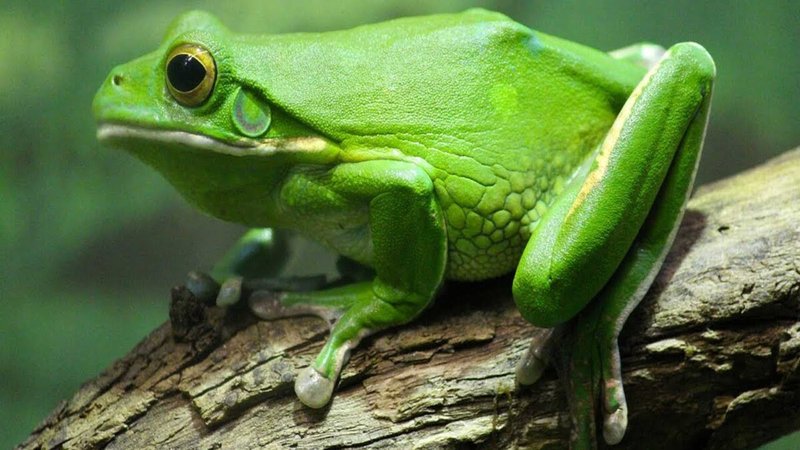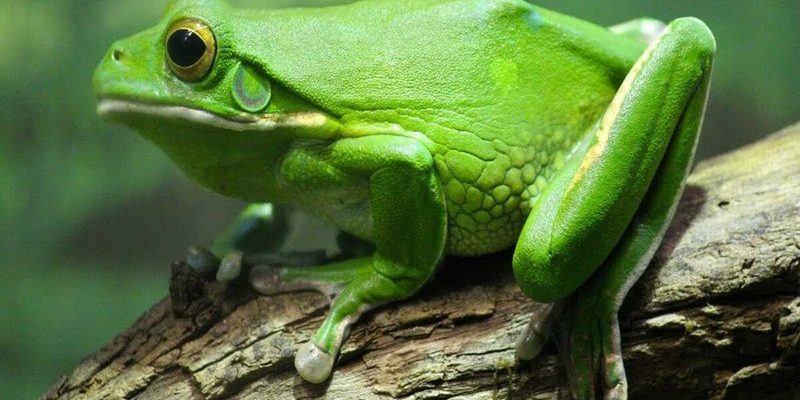
The African Tree Toad is one of nature’s most fascinating creatures, often hiding in plain sight among the lush greenery of Africa’s tropical environments. If you’ve ever found yourself wandering through a dense forest and heard a chorus of croaks echoing through the trees, you’re likely listening to these remarkable little amphibians. They’re not just any toads; they’ve got a unique charm that sets them apart from their more common cousins.
Imagine a small, vibrant creature, blending seamlessly with the leaves around it, while its distinct calls fill the air, telling a story of survival, habitat, and adaptation. These toads are not only well-adapted to their environment; they also provide insights into the ecosystems they inhabit. Let’s dive deeper into the world of the African Tree Toad and explore its intriguing characteristics, habitats, and behaviors.
Physical Characteristics
The African Tree Toad is small but mighty, typically measuring between 1.5 to 3 inches long. Its skin features a tapestry of colors, usually ranging from shades of green to brown, allowing it to camouflage perfectly with its surroundings. This ability to blend in is crucial for both predation and avoiding becoming prey. The toad’s skin is not just colorful; it’s also smooth and slightly moist, which is essential for their respiratory systems, as they can absorb oxygen through their skin.
One of the most striking features is their large, expressive eyes that dominate their heads. These are not just for show—they help the toads see better in low-light conditions, thanks to a specialized layer of tissue known as the tapetum lucidum, which reflects light. This gives them superior night vision, making them effective nocturnal hunters.
Interestingly, the African Tree Toad possesses webbed feet, which enhances its swimming abilities. While they are primarily terrestrial or arboreal, they can often be found near water sources, making occasional swims a necessary skill for a quick escape or foraging.
Habitat and Distribution
African Tree Toads are found throughout various regions of Africa, primarily in tropical rainforests, but they can adapt to other habitats like savannas and even near human settlements. They thrive in warm, humid environments, which are advantageous for their breeding cycles. These habitats provide not just shelter but also a rich source of food.
They are remarkable climbers and can often be spotted perched on tree branches or nestled among leaves. This arboreal lifestyle helps them evade terrestrial predators and gives them direct access to various insects, which are their primary food source. The availability of water bodies nearby is crucial for their breeding; they often return to seasonal ponds or swamps to lay their eggs, ensuring their offspring have a suitable environment for growth.
As their name suggests, these toads often prefer a tree-dwelling life. The tall trees provide cover against larger animals, while the dense foliage allows them to hunt for food with ease. However, they are also quite flexible in their choice of habitat, showing a remarkable ability to adapt to different environmental conditions.
Diet and Feeding Habits
The African Tree Toad is predominantly insectivorous, feeding on a diet rich in various insects and arthropods. They’re not picky eaters and will consume a wide range of prey. Ants, beetles, and crickets make up a large portion of their diet. They have a unique feeding strategy, utilizing their sticky tongues to capture prey swiftly. When they spot a meal, they can flick out their tongues, which are incredibly quick and agile, making it easier to snag insects.
What’s fascinating is their ability to hunt at night. Since they are nocturnal, their peak feeding times coincide with the activity levels of their prey. This strategy not only reduces competition but also increases their chances of a successful hunt. You might wonder how they find food in the dark—this is where their excellent night vision comes into play, allowing them to navigate and locate potential meals effectively.
Water is also an essential part of their feeding habits. The African Tree Toad absorbs moisture not just from the environment but also from its food. Staying hydrated is vital, as it helps maintain their skin health, which is crucial for respiration. This intricate relationship between diet and hydration showcases how these toads have adapted to thrive in their environments.
Reproduction and Life Cycle
The reproductive cycle of the African Tree Toad typically occurs during the rainy season, which is ideal because it provides the necessary water for their eggs to develop. Males can be heard calling to attract females, creating a symphony of sounds that fill the evening air. These calls not only serve to woo the females but also to establish territory among competing males.
Once a female selects a mate, they will usually head to a suitable water source where the female lays her eggs. A single clutch can contain hundreds of tiny eggs, which hatch into tadpoles. This stage is critical, as the tadpoles rely on the water for survival, feeding on algae and organic matter until they metamorphose into adult toads.
The transformation from tadpole to adult is a remarkable process, during which they develop legs, absorb their tails, and adapt to an entirely different lifestyle. During this phase, they are particularly vulnerable to predators, but once they reach maturity, they become more resilient and are able to fend for themselves.
Conservation Status
While the African Tree Toad is not currently classified as endangered, its habitat faces various threats from human activities. Deforestation, pollution, and climate change are significant factors that can disrupt their ecosystems. As forests are cleared for agriculture or urban development, the toads lose vital breeding and feeding grounds. Conservation efforts are critical to ensure their survival.
Organizations focused on preserving natural habitats are working diligently to maintain and restore the ecosystems where these toads thrive. Education is also essential; raising awareness about the importance of amphibian species like the African Tree Toad can lead to greater community involvement in conservation initiatives.
In addition, monitoring populations helps researchers understand the impact of environmental changes on these toads. By studying their habits, behaviors, and challenges, scientists can develop more effective strategies to protect them and their habitats. It’s a continuous effort, but every small action contributes to a larger goal: securing a future for the African Tree Toad.
Interesting Facts
| Scientific Name: | Amietophrynus poweri |
| Length: | 1.5 to 3 inches |
| Habitat: | Tropical rainforests, savannas |
| Diet: | Insects, arthropods |
| Lifespan: | Up to 10 years in the wild |
| Breeding Season: | During rainy season |
| Conservation Status: | Not endangered, but threatened by habitat loss |
The Role of African Tree Toads in Ecosystems
African Tree Toads play a vital role in their ecosystems, acting as both predator and prey. As insectivores, they help control insect populations, ensuring that their habitats remain balanced. Without these toads, certain species of insects could proliferate uncontrollably, leading to potential ecological imbalances.
On the flip side, these toads themselves are essential food sources for various predators, including birds and larger mammals. Their presence in the food web is a reminder of the interconnectedness of all species. It’s fascinating to think about how each organism, no matter how small, contributes significantly to the health and stability of its environment.
Moreover, studying the behavior and health of African Tree Toads can serve as an indicator of ecosystem health overall. Since amphibians are sensitive to environmental changes, large population declines can signal broader ecological issues. This makes the conservation of the African Tree Toad not just a matter of saving one species but a step toward preserving entire ecosystems.
FAQ
What is the lifespan of an African Tree Toad?
An African Tree Toad can live up to 10 years in the wild, although factors such as environmental conditions and predation may influence this. In captivity, with proper care, they may live even longer. Their lifespan is a testament to their adaptability and resilience in various habitats.
Are African Tree Toads dangerous to humans?
No, African Tree Toads are not dangerous to humans. They are small, non-aggressive creatures that pose no threat. However, like many amphibians, they do secrete toxins through their skin, so it’s best to avoid handling them. This is part of their defense mechanism against predators.
What do African Tree Toads eat?
African Tree Toads primarily feed on insects and other small arthropods. They are opportunistic feeders, meaning they will eat whatever is available. Their diet can include ants, beetles, and crickets, making them important in controlling insect populations in their habitats.
How do African Tree Toads communicate?
The African Tree Toads communicate primarily through vocalizations. Males call to attract females during the breeding season, producing a variety of croaks and whistles. This communication is essential for mating and establishing territory among competing males.
Where do African Tree Toads live?
African Tree Toads are found in tropical rainforests, savannas, and sometimes near human settlements across various regions in Africa. They thrive in warm, humid environments, often residing in trees where they can hunt and evade predators.
Are African Tree Toads nocturnal?
Yes, African Tree Toads are primarily nocturnal, meaning they are most active at night. This behavior allows them to hunt for food under the cover of darkness and reduces the risk of predation during the day when larger animals are more active.
How do African Tree Toads reproduce?
African Tree Toads reproduce during the rainy season. Males attract females with their calls, and once a mate is selected, they migrate to suitable water sources to lay eggs. The eggs hatch into tadpoles, which will develop into adult toads.
What threats do African Tree Toads face?
African Tree Toads face threats from habitat loss due to deforestation, pollution, and climate change. As their natural environments shrink, these toads are at risk, making conservation efforts crucial for their survival.
Can African Tree Toads swim?
Yes, African Tree Toads are capable swimmers. Their webbed feet aid in swimming, which can be crucial during their breeding season when they need to navigate to water sources. This adaptability is one reason they thrive in diverse habitats.
How can I help protect African Tree Toads?
You can help protect African Tree Toads by supporting conservation organizations that focus on habitat preservation. Educating others about the importance of these toads and their ecosystems also helps raise awareness. Every effort counts in maintaining biodiversity.
What makes African Tree Toads special?
African Tree Toads are special due to their unique adaptations, vibrant colors, and crucial roles in the ecosystem. Their ability to camouflage, their nocturnal habits, and their fascinating life cycle make them a captivating subject of study for enthusiasts and scientists alike.
Are African Tree Toads good pets?
While African Tree Toads can be kept as pets, they require specific care, including proper habitat setup, humidity levels, and diet. They may not be the ideal pet for everyone, but for dedicated amphibian enthusiasts, they can be a rewarding choice. Always do your research before deciding to keep one.

